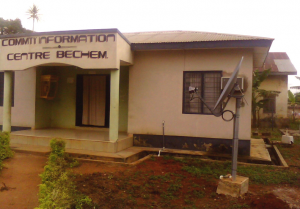Are schools in Latin America and the Caribbean (LAC) network ready? If so, what does it mean for improving the equity and quality of education in that part of the world?
This is a complicated question, no doubt, and one that is going to be asked more frequently with the introduction of the new Broadband Partnership of the Americas which promises to provide connectivity to schools that generally have been considered disconnected from the rest of the world. Moreover, this question seemingly ignores the unique cultural context and infrastructure of each country within the LAC region. Providing internet access in schools is just one important variable in a complex equation that the Information and Communication Technology for Education (ICT4E) community struggles to understand when attempting to integrate technology into the classroom. Does connectivity + ICT devices + digital content = better education? Many would vehemently argue no when considering differences in quality and methods of delivery.
But the LAC region on the whole appears to have a different equation altogether and one that seemingly receives less attention than other “developing” parts of the world, such as parts of Africa that tend to be the testing ground for many new ICT4E initiatives. When Latin America is mentioned in the ICT4E community, many often think of recent projects like OLPC deployments in Peru or Seeds of Empowerment’s initiatives in Argentina and Uruguay. But these are mainly device-based programs and, without increased internet coverage in the region, many of the valuable open educational resources and distance learning opportunities available through internet access remain out of reach.
According to the World Economic Forum’s (WEF) new 2012 Global Information Technology Report, a comprehensive assessment of the preparedness of economies to leverage the networked economy, LAC’s Internet access in schools ranks well below its developed neighbors (see map on the right). This is just one of many factors, along with education quality, level of adult literacy, and rate of secondary education enrollment, that the WEF considers when determining the “network readiness” of a country.
“Network readiness”, as defined by a complex framework which translates into the Network Readiness Index, is comprised of four subindexes that measure the environment for ICT; the readiness of a society to use ICT; the actual usage of all main stakeholders; and, finally, the impacts that ICT generates in the economy and society. The report found that LAC’s network readiness ranking is lagging far behind “developed” countries for a number of reasons:
“Although the region is vast and heterogeneous, three shared reasons for this lag can be identified: these countries all exhibit an insufficient investment in developing their ICT infrastructure, a weak skill base in the population because of poor educational systems that hinder society’s capacity to make an effective use of these technologies, and unfavorable business conditions that do not support the spur of entrepreneurship and innovation. Addressing these weaknesses will be crucial for improving the region’s competitiveness and shifting its economies toward more knowledge-based activities.”
Addressing the weaknesses in the educational systems throughout the LAC region creates a complicated question when considering the role that ICT4E plays: How can technology be used effectively to improve an education system if the current system’s weaknesses and lack of technology expertise prevent technology from being integrated into the classrooms in the first place? Obviously, a country’s network readiness — or even ICT4E readiness — is complex and addressing it requires a multifaceted approach. For schools in the LAC region, improving internet access and expanding broadband technologies will address at least one aspect of the digital divide in education.
More information about ICT4E policies in LAC:
- A database of ICT for education policies around the world — including the LAC region — from the GESCI
- Public policies for the information society: a shared vision? from the Economic Commission for Latin America and the Caribbean















































